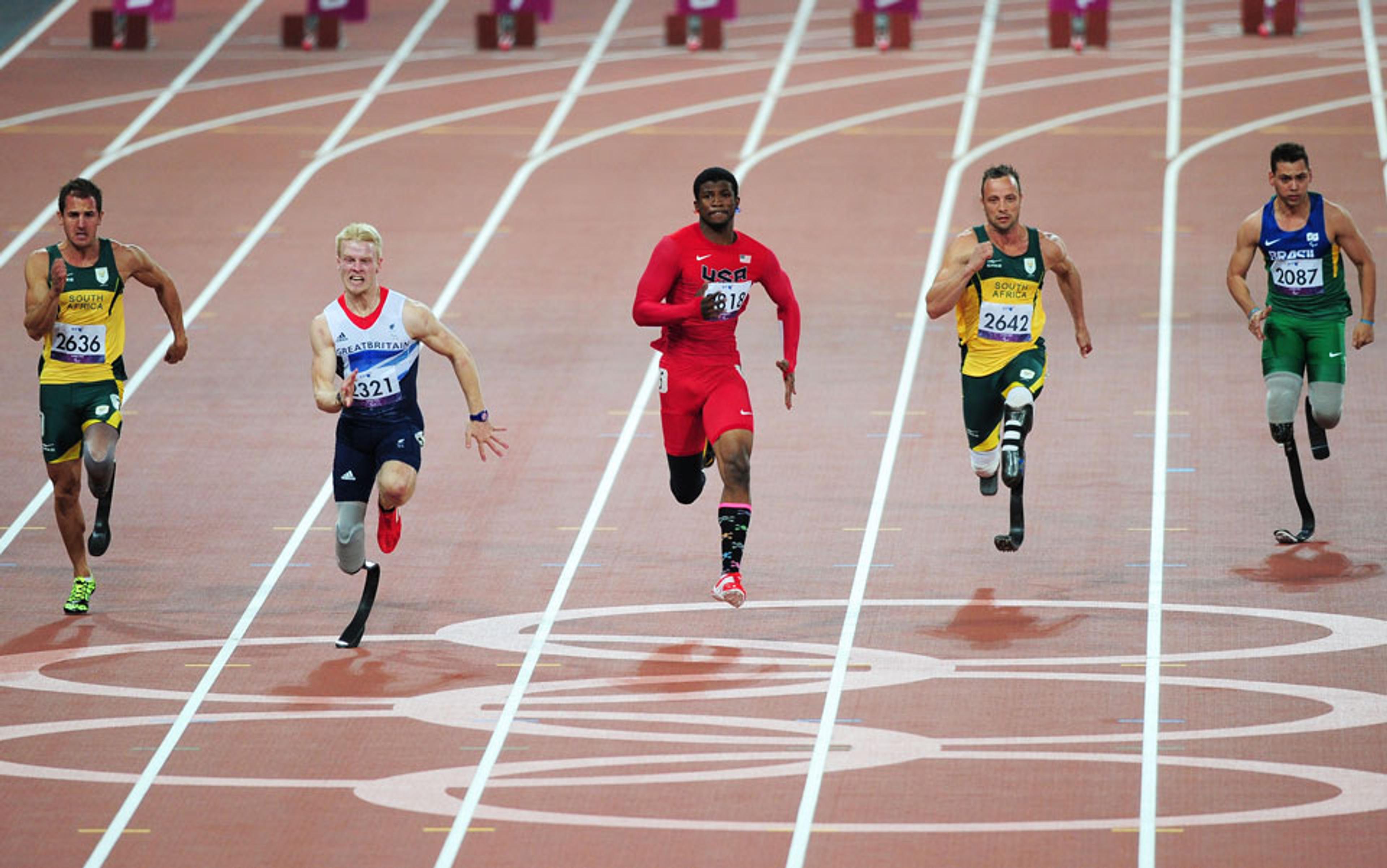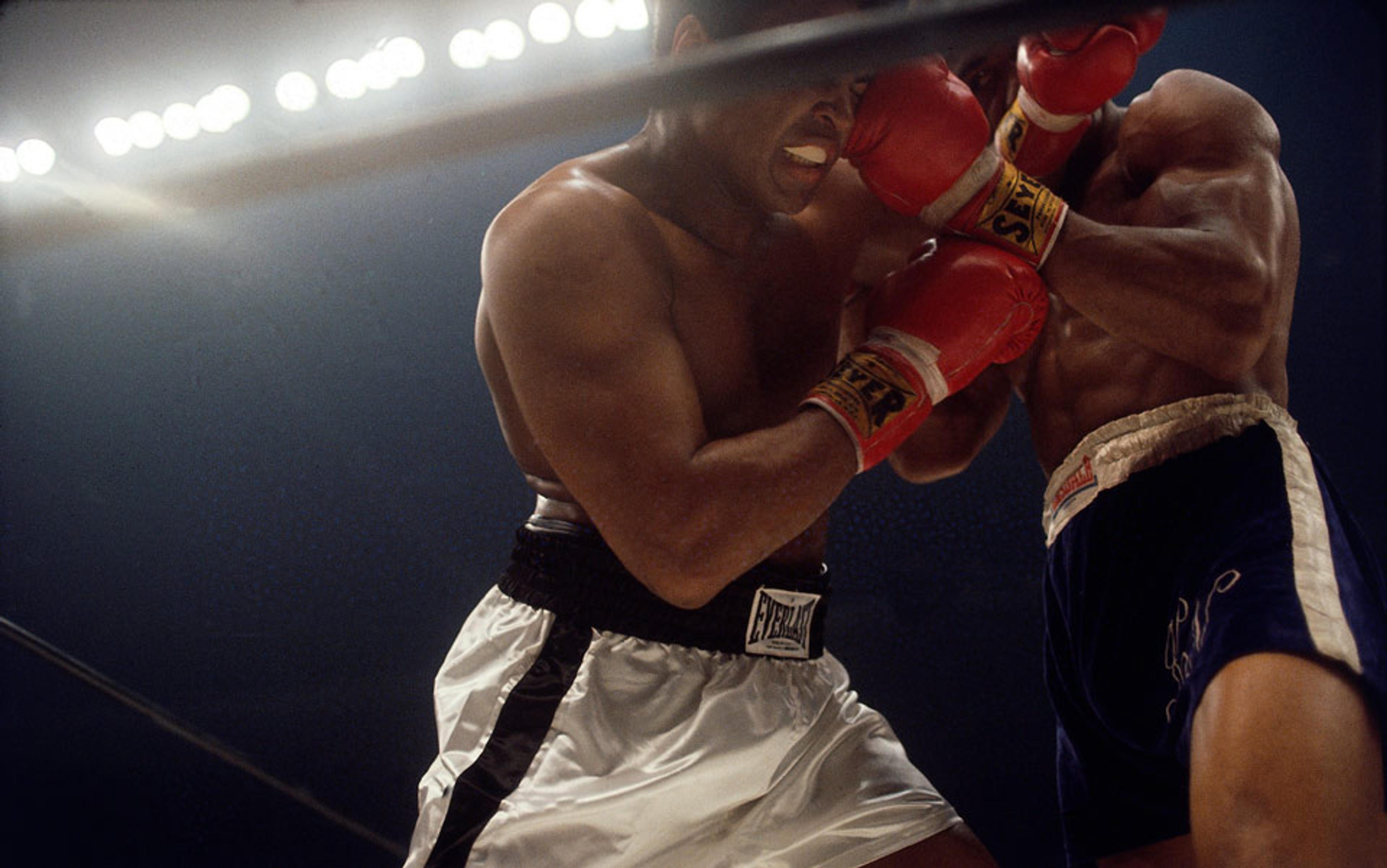Nothing is more reviled in sport now than doping. The US cyclist Lance Armstrong is not just bad – in the eyes of the media he is practically a monster: ‘singularly evil’, and ‘worse than shameless’. His body, once a modern miracle for beating cancer and winning the Tour de France seven times, is now ‘worthless’ and his founding of a successful anti-cancer charity is just ‘part of the shell game of appearance’.
Last year, the Australian Crime Commission reported widespread use of performance-enhancing drugs in Australia. Richard Ings, former head of the Australian Sports Anti-Doping Authority, pronounced: ‘This is not a black day in Australian sport, this is the blackest day in Australian sport.’ The same year, a report by the World Anti-Doping Agency (WADA) highlighted the lack of effectiveness of drug-testing programmes. Dick Pound, the former head of WADA and the report’s author, added his own pugnacious gloss to its findings: ‘It ought to be a wake-up call. It ought to be a call to arms.’
We don’t know how common doping is, but we have some clues. Of 21 podium finishers in the Tour de France for the period 1999-2005, 20 are suspected or proven to have used illegal substances. For the longer period 1996-2010, the figure is 36 out of 45. Ahead of the London 2012 Olympics, 107 athletes tested positive for doping, and numerous athletes who passed tests throughout London 2012 have since been found to be doping, including the Russian swimmer Yulia Efimova, the US sprinter Tyson Gay (who admitted to it), and the Jamaicans Asafa Powell and Sherone Simpson. Other successful athletes were drawn from the pool of previously convicted drug cheats, including Alexander Vinokourov (Russia/cycling), Tatyana Lysenko (Russia/the hammer), Aslı Çakır Alptekin (Turkey/women’s 1,500-metre race), and Sandra Perković (Croatia/women’s discus) – all of them gold medallists in 2012.
The substances most commonly used by athletes today fall into three broad classes. The first class enhances normal physiology to improve training and recovery, and includes some anabolic steroids (such as testosterone) and growth hormone. The second enhances normal physiology to improve performance in competition, and includes blood doping and the use of human erythropoietin (EPO) – a naturally produced hormone that stimulates red blood-cell production, thereby improving the capacity of the blood to carry oxygen. Both of these can be called ‘physiological doping’. The third class includes unnatural substances that modify normal physiology to enhance training, recovery and performance during competition. It includes beta-blockers that reduce tremor and anxiety; diuretics, painkillers, anti-inflammatory drugs and cognitive boosters such as methylphenidate (Ritalin) and modafinil, as well as illegal recreational drugs such as cocaine and amphetamines. This is ‘non-physiological’ doping. Of all the substance listed here, only painkillers and anti-inflammatory drugs are currently legal.
Non-physiological doping is relatively easy to detect because it involves the introduction into the body of substances that are not normally present. Sensitive tests of blood or urine can pick these up. The first two classes of substance abuse are much more difficult to detect because they involve substances that naturally occur in the body. When small amounts are taken, within the population’s normal range, it is very difficult to tell whether the athlete is enhanced, or just lucky.
WADA sets the list of prohibited substances to which all sports must adhere. However, it is up to individual sports agencies to set the testing regimes. For example, cycling has a biological passport system, but soccer does not. And whereas testing for EPO might be important in an endurance sport, it might be less important in, say, bowling.
Still, to secure better conviction rates, there needs to be agreement about what makes doping illegal. WADA bans substances that meet two of these criteria: (1) they’re a danger to health; (2) they lead to performance enhancement; or (3) their use is contrary to the spirit of sport. The first criterion is uncontroversial; the second bizarre. Elite sport is explicitly about performance enhancement. Many performance-enhancing substances are legal: creatine, for instance (which delivers a 5-15 per cent increase in maximal power/strength), caffeine (increases time-to-exhaustion by 10 per cent) and nitrates in beetroot extract (increases time-to-exhaustion by 15-25 per cent in constant, high-intensity exercise). Armstrong himself boasted about his use of an oxygen tent. Team Sky, the British professional cycling team that brought Bradley Wiggins and Chris Froome to the winner’s podium in the Tour de France in 2012 and 2013 respectively, is today admired for its use of ‘marginal gains’ – tiny enhancements in equipment and clothing, as well as training and technique, which, added together, make a big difference to performance.
WADA’s real objection, as its Code states explicitly, is that ‘[d]oping is fundamentally contrary to the spirit of sport’.
Sports authorities around the world are taking doping extremely seriously. The Australian Sports Anti-Doping Authority Amendment Bill 2013 gives ASADA greater powers to convict drug cheats. The new WADA Code, due in 2015, will emphasise the need for broader investigations, including support staff, as well as more traditional testing methods. After all, such methods formed the bulk of the US Anti-Doping Agency’s dossier against Armstrong, leading, in turn, to his confession.
At the same time, spurred by complaints from athletes as well as fans, some sports are increasing testing, particularly the more informative, but more invasive blood testing. For example, the International Tennis Federation announced earlier this year that the number of blood tests performed had quadrupled in 2013. Both tennis and the US National Football League followed cycling by introducing the ‘biological passport’. Such a passport records an athlete’s pattern of physiological values. If there’s any deviation from that pattern, even if it’s within the population’s normal range, further testing and possible prosecution can follow.
All kinds of doping could be eliminated if we assigned billions of dollars to the task and implemented 24-hour surveillance, and other intrusive restrictions on athletes, all of which is extremely unlikely. But there is a better way to reduce doping and cheating. As long as doping is against the rules, it counts as cheating. But rules can change. If they do, would doping still, in and of itself, be ethically wrong? Thinking about the values that ought to inform policy, I see no good reason to ban physiological doping. In fact, there are good reasons to dope in this way. Non-physiological doping is a different story and, thankfully, it’s much easier to detect.
Sport originally evolved as a way of showing off our genetic fitness. Displaying great speed, strength, intelligence, ingenuity and co-ordination in public demonstrated to potential mates your capability to survive and reproduce. It appears that we haven’t come far. One French study by Charlotte Faurie, Dominique Pontier and Michel Raymond published in Evolution and Human Behavior in 2004 reported that: ‘Both male and female students who compete in sports reported significantly higher numbers of partners than other students, and within the athletes, higher levels of performance predicted more partners.’ Perhaps because of the status bestowed by athletic prowess, sportsmanship – the spirit of sport – has come to embody the values we promote in society as a whole. As Dick Pound of WADA said: ‘You respect the rules, you respect your opponents, you respect yourself. You play fair. I think that bleeds over into life as well.’
The values behind the spirit of sport are defined by WADA as: ethics, fair play and honesty; health; excellence in performance; character and education; fun and joy; teamwork; dedication and commitment; respect for rules and laws; respect for self and other participants; courage; and community and solidarity.
Sport is meant to show humans ‘at their best’. It allows us to demonstrate determination, striving, struggling and conquering. Sport is also meant to capture the human spirit. That’s why, the argument goes, if doping were legal it would still be cheating, because sport would no longer be testing those fundamental human virtues and capacities, but would merely showcase the wonders of the modern pharmaceutical industry (or your other favourite supplier of dope).
Yet doping is not always contrary to these values. Consider the following four scenarios, the first two involving physiological doping, the third involving technological enhancement and the last, analgesics. They take place in an imagined world where there are no banned substances or procedures, and only one rule applies: you must not contravene the spirit of sport.
Ben is a 100-metre sprinter. He wishes to use steroids. These will enable him to recover more quickly from the muscle damage that intense exertion in training inevitably causes, so he will be able to push himself still further without injury. Steroids are of no use during competition, because their effects are slow to manifest, but they will enable him to train harder and longer before competition.
Lance is a cyclist who wishes to use ‘blood doping’ during a three-week cycle race. With 10 hours in the saddle a day, his blood-cell count will drop naturally from extreme exertion. A blood transfusion of his own blood (donated months before) will enable him to carry more oxygen and have greater endurance, counterbalancing the extreme toll of the race on his body.
Hank is an Iraq war veteran. He sustained severe ankle fractures that have not healed perfectly. He can limp only short distances, in pain. He requests bilateral amputations so he can compete using blades in the Paralympics.
David is an international soccer player in the World Cup finals. He suffers from chronic pain, caused by his career in football and the wear and tear that results. He wishes to use strong analgesics and anti-inflammatory drugs to continue through the competition without being hampered by his pain.
All of these cases involve performance enhancement. But which of them undermine the true spirit of sport?
Physiological doping agents used today enhance natural processes and capacities, and can be safely administered, under proper supervision. For example, steroids and EPO harness natural physiological processes. They don’t substantially change what people are capable of doing but simply optimise their physiology to achieve it. Nor do they transfer responsibility for the outcome to some external agent, such as a drug company. Steroids enable the athlete to train harder, but she still has to train harder to get a result. And she still has to try just as hard on the day to win. In short, the human element is as prominent as it is in ‘clean’ sport. Ben Johnson, Carl Lewis, Yohan Blake and other 100-metre champions are not real-life Popeyes: the pill does not create the muscle itself. These athletes have trained as hard, if not harder, than any athlete before them.
The US cyclist Tyler Hamilton, who in 2011 confessed to doping, achieved second place in one stage of the 2002 Giro d’Italia with a broken shoulder, coping with the pain by grinding his teeth. His reward was caps on 11 of those teeth. When he switched to blood doping, he noticed a remarkable phenomenon. His body felt the same screaming pain and exhaustion that marked the end of his physical reserves. But when he pushed on, he found he had more to give. His increased hematocrit (red blood cell count) was no easy ride. It simply gave him the ability to physically achieve more miles by continuing at the very edge of what he could mentally endure. That takes a courage and commitment that very few have.
Humans are not racehorses: they are their own masters. Performance enhancement embodies the spirit of humanity
I believe the virtues we want sport to test are not compromised by the kinds of doping Ben and Lance wish to engage in. Like all athletes, they will dedicate their lives to their sport. In fact, sport has always been more than a test of physical excellence. It is also a test of mental capacities. Witness the strategies in a game of tennis, or the ways that soccer players exploit the rules, or the ‘poker-face’ techniques that cyclists use to make opponents believe they feel no pain. Mental virtues such as creativity, determination, calm, ingenuity and cunning are as important as physical attributes.
These attributes are also tested in training and preparation. How to train, for how long, when and, perhaps hardest of all, how to give 100 per cent at each session? The answers have become increasingly sophisticated, with measures of oxygen consumption, blood sampling, computer evaluation, wind chambers and other devices to maximise training. It is impossible to measure today’s greats against yesterday’s, even without doping. Training, nutrition, and equipment design have all been fine-tuned at a cost of millions of dollars. Our physiology is not immune to this tinkering: where once athletes were advised to avoid water as a dead weight, adequate hydration is now understood to be key. Where once they ate whatever food they could digest, today they have dosed 100-calorie gels.
Central to human progress (in life, as in sport) has been our ability to understand the world and ourselves, and modify these for the better. If this is admirable in life, why is doping against the spirit of sport? Doping expresses the spirit of sport. To be human is to be better. Humans are not like racehorses, flogged by the whip of the jockey: they are their own masters. The choice to be better is an expression of that, and so performance enhancement embodies the spirit of humanity.
This brings us to Hank, who prefers technology to partially functioning normal human anatomy. In this case, his choice for elective amputation can be seen as ‘rehumanising’ rather than ‘dehumanising’ – choosing to be a different kind of human. I see no reason why Hank should not be able to compete in what we currently term disabled sport. While the voluntary amputation of functioning limbs is extreme, a rare body integrity disorder has led a handful of people to request such amputations. But consider ‘Tommy John’ surgery, which releases the ulnar collateral ligament in the elbow and replaces it with a tendon: some observers claim it enhances pitching ability.
At present, blades used by amputees such as the South African sprinter Oscar Pistorius are not superior to normal human anatomy. But in time, bionic limbs will outstrip human anatomy in terms of performance. When disabled athletes become the modern cyborgs, ‘running’ the 100 metres might be much more interesting than natural running, but the performances would no longer be substantially human.
Consider now our final doper, David, who wants to use analgesics and anti-inflammatory drugs. I’d argue that this is against the spirit of sport: it’s ‘mental doping’ and, as such, it undermines our humanity.
mental doping undermines courage, determination and ‘toughness’– our very nature as human agents – and should be banned
What is mental doping? Mike Tyson, the US heavyweight boxer, revealed in his autobiography Undisputed Truth (2013) that he took cocaine prior to many of his fights because he was addicted to the substance. But cocaine can help to master fear and pain, and those are precisely the emotions that a champion boxer must conquer, as well as being fast and strong. If mental doping is the use of substances to change our willpower, desires, and perception of pain, then using cocaine counts as mental doping.
There are many other forms of mental doping. An essential test of archery, shooting or snooker is the ability to control one’s nerves. Propranolol, widely used by classical musicians to improve performance, reduces anxiety and tremor. Stimulants such as modafinil (a wakefulness and attention promoter) has recently been used in sports such as running, shot put and baseball, and stimulants similar to amphetamines have long been used in baseball, cycling and other sports. These are all forms of mental doping. Since they undermine the need for courage, determination and ‘toughness’, our very nature as human agents, they should be banned.
Analgesics, anti-inflammatory drugs and local anaesthetics are ubiquitous in rugby and American football, and are used during competition to enable athletes to continue to perform, and perform better. This is dangerous: athletes get worse injuries than they would have if they’d played with the pain. These drugs are also addictive. The US National Football League is currently being sued by more than 500 ex-players over the use of such painkillers, which has left many addicted, and others suffering side effects from the drugs, or from playing through serious injuries.
Because analgesics and anti-inflammatory drugs are not naturally occurring in the body, it is technically easier to pick up the use of such exogenous agents in blood or urine tests. So if doping bans were narrowed to focus exclusively on non-physiological agents and practices, they’d be easier to enforce.
But what about performance-enhancement technology? Already, such technology is challenging our existing ethical frameworks. In transcranial electrical stimulation (TES), a light electrical current is placed over specific areas of the brain via a portable stimulator. It has been used to improve learning, including numeracy, but can also be used to enhance motor skills, co-ordination and other qualities necessary in sport. Should TES-assisted training be banned? One argument is that it merely enhances normal learning: as an analogue of good diet or sleep, it is not dehumanising. But if TES were used to change mental attributes, such as determination or pain tolerance, it could be classified as ‘mental doping’.
The US military has a vigorous programme of mental and physical enhancement. It is already developing technologies that enable soldiers to process cues from the periphery of their visual field, which we are normally aware of only subconsciously. This kind of technology could be used to enhance performance in games such as soccer or rugby. Soldiers will likely be the first cyborgs. But military technology has a way of spilling over to civilian use, as the internet has done. What to do when undetectable agents alter our basic psychology is an ethical question, both for sport and for life in general. It forces us to ask: what kind of people should we be?
caffeine is now off the banned list, partly because nearly everyone is normally ‘caffeinated’
In fact, we already face such questions. When stimulants were banned from baseball, there followed an explosion of ADHD diagnoses among baseball players and therapeutic-use exemptions for the use of cognitive performance-enhancing substances such as methylphenidate (Ritalin), usually used for children who cannot concentrate and focus. I’ve argued that such mental doping is against the spirit of sport. However, if such use becomes ubiquitous and safe, part of the fabric of society, it might not matter in the same way. This is what happened to caffeine. It was initially banned as a performance enhancer. It is now off the banned list, partly because it is safe enough but also because nearly everyone is normally ‘caffeinated’.
As science affords us ever more possibilities for human enhancement, we need to evolve our ethical frameworks rationally. If we value reason, creativity and ingenuity, this argues in favour of some forms of doping that express the human drive to be better. If physiological doping were legalised, for example, it would allow the supervised use of steroids, growth hormone and blood doping, within physiological limits.
But doping that departs from optimising normal physiology, especially that which pushes us into different realms of existence, is another matter. Paradoxically, it is mental enhancement that poses the biggest threat to sport, not physical enhancement, which either does not undermine sport or is readily detected. And if we did one day permit ‘rehumanising’ practices in sport – such as the use of bionic legs – the future might not be one of able-bodied and disabled Olympics, but of the human and superhuman Olympics.






